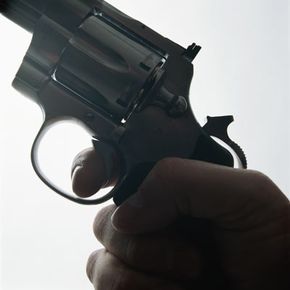In 1830, when he was only 16, Samuel Colt left home and took a job on a merchant ship bound for India. In his spare time, he toyed with designs for a new sort of gun -- one that could be fired repeatedly without reloading. While a number of repeating weapons had already been developed, none of them had caught on with the public, mostly because they were too complicated and cumbersome.
Inspired by a capstan mechanism on the ship, Colt developed a simple revolving ammunition cylinder. Initially, people weren't particularly impressed with the new weapon; but by the 1850s, Colt's company was enjoying phenomenal success. In 1856, he had to churn out 150 guns a day just to keep up with the growing demand!
Advertisement
The extremely simple, highly reliable weapon had a profound effect on life in the United States and later in the rest of the world. Armed with a revolver, anybody could kill another person in a matter of seconds. War, crime, law enforcement and even everyday arguments were infused with a new deadly element.
In this edition of HowStuffWorks, we'll look at the basic operating principle of the revolver to see why it remains such a popular weapon after more than 150 years on the market. We'll also look at the basic concepts behind firearms and check out a few of the important weapons that preceded the revolver.
